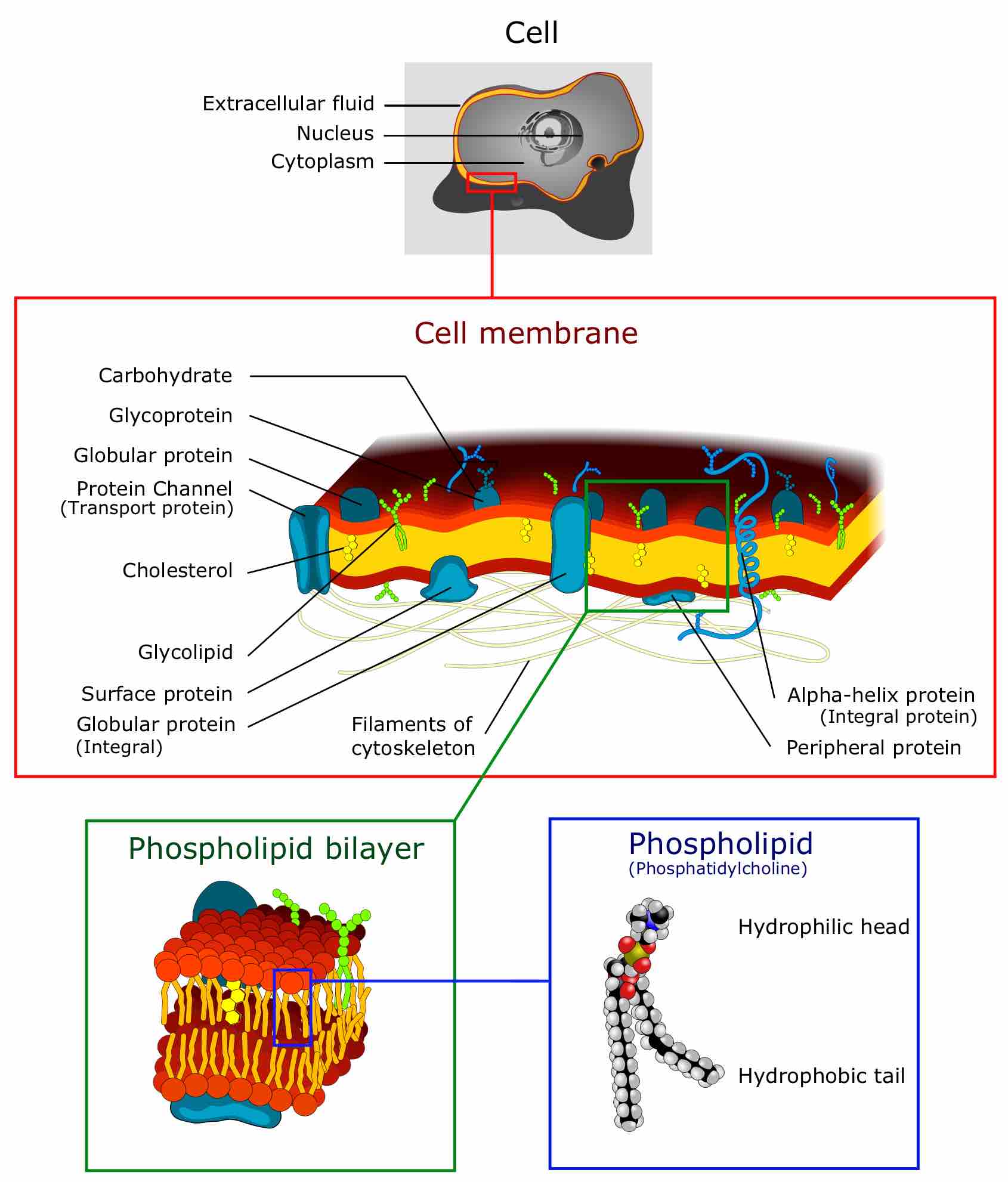Structure of Plasma Membranes
The plasma membrane (also known as the cell membrane or cytoplasmic membrane) is a biological membrane that separates the interior of a cell from its outside environment.
The primary function of the plasma membrane is to protect the cell from its surroundings. Composed of a phospholipid bilayer with embedded proteins, the plasma membrane is selectively permeable to ions and organic molecules and regulates the movement of substances in and out of cells. Plasma membranes must be very flexible in order to allow certain cells, such as red blood cells and white blood cells, to change shape as they pass through narrow capillaries.
The plasma membrane also plays a role in anchoring the cytoskeleton to provide shape to the cell, and in attaching to the extracellular matrix and other cells to help group cells together to form tissues. The membrane also maintains the cell potential.
In short, if the cell is represented by a castle, the plasma membrane is the wall that provides structure for the buildings inside the wall, regulates which people leave and enter the castle, and conveys messages to and from neighboring castles. Just as a hole in the wall can be a disaster for the castle, a rupture in the plasma membrane causes the cell to lyse and die.

The plasma membrane
The plasma membrane is composed of phospholipids and proteins that provide a barrier between the external environment and the cell, regulate the transportation of molecules across the membrane, and communicate with other cells via protein receptors.
The Plasma Membrane and Cellular Transport
The movement of a substance across the selectively permeable plasma membrane can be either "passive"—i.e., occurring without the input of cellular energy—or "active"—i.e., its transport requires the cell to expend energy.
The cell employs a number of transport mechanisms that involve biological membranes:
- Passive osmosis and diffusion: transports gases (such as O2 and CO2) and other small molecules and ions
- Transmembrane protein channels and transporters: transports small organic molecules such as sugars or amino acids
- Endocytosis: transports large molecules (or even whole cells) by engulfing them
- Exocytosis: removes or secretes substances such as hormones or enzymes
The Plasma Membrane and Cellular Signaling
Among the most sophisticated functions of the plasma membrane is its ability to transmit signals via complex proteins. These proteins can be receptors, which work as receivers of extracellular inputs and as activators of intracellular processes, or markers, which allow cells to recognize each other.
Membrane receptors provide extracellular attachment sites for effectors like hormones and growth factors, which then trigger intracellular responses. Some viruses, such as Human Immunodeficiency Virus (HIV), can hijack these receptors to gain entry into the cells, causing infections.
Membrane markers allow cells to recognize one another, which is vital for cellular signaling processes that influence tissue and organ formation during early development. This marking function also plays a later role in the "self"-versus-"non-self" distinction of the immune response. Marker proteins on human red blood cells, for example, determine blood type (A, B, AB, or O).